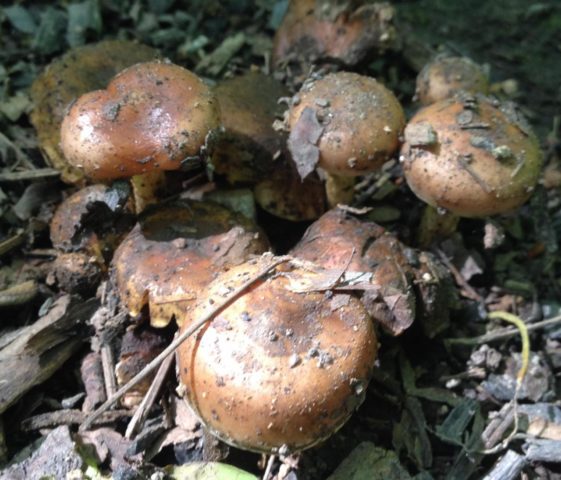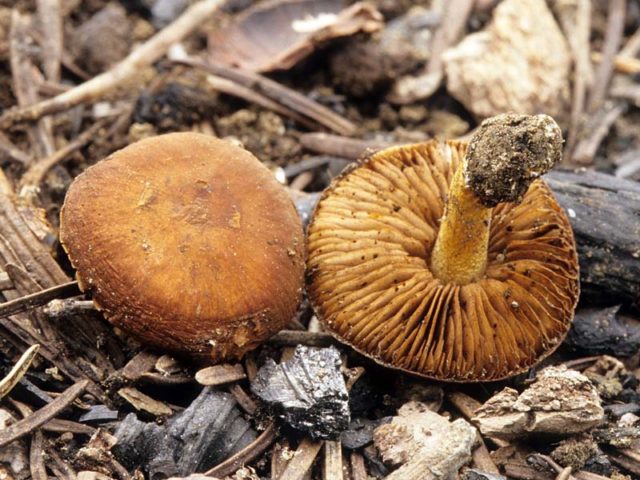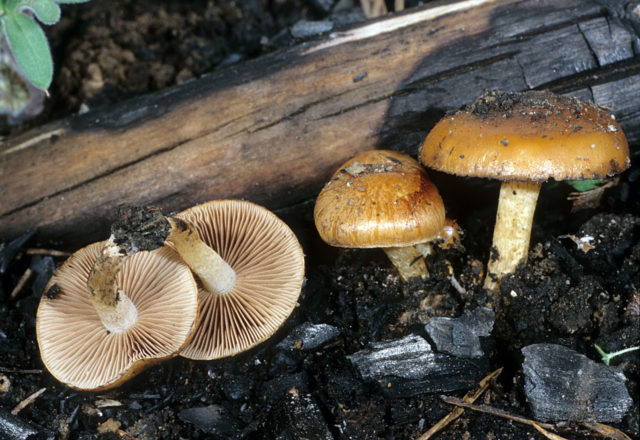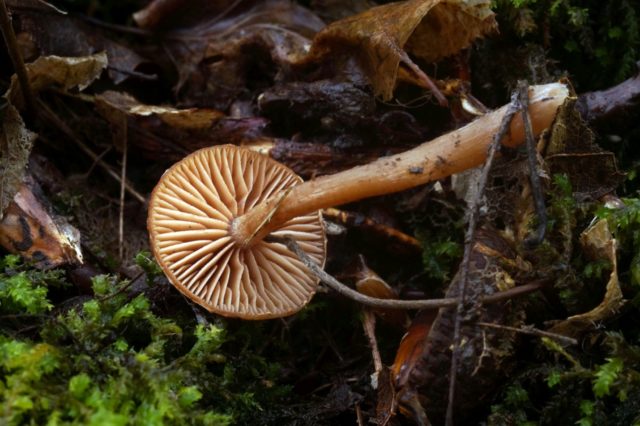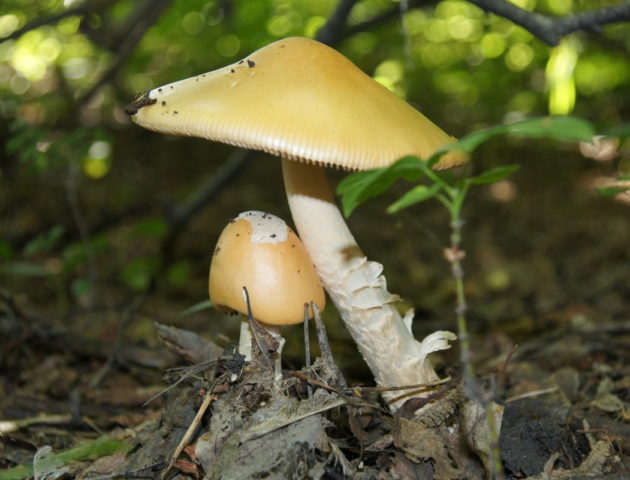Content
Cinder scale (Pholiota highlandensis) is an unusual fungus of the Strophariaceae family, of the genus Pholiota (Scale), which can be found at the site of fires or small fires. Also, the mushroom is called cinder foliot, coal-loving flake.
What does Cinder flake look like?
Cinder scaly got its name because of the scaly surface of the fruiting body. She belongs to plastic mushrooms. The plates are located at a small distance from each other, accrete with the leg, spores are located in them. In young specimens, the plates are gray, but as the spores grow and mature, the shade changes to clay-brown.
The photo below shows cinder flakes in a mature state, when the color of the plates has already acquired a brown tint.
Description of the hat
In young flakes, the coal-loving cap looks like a hemisphere, during growth it opens. The diameter is from 2 to 6 cm, the color is heterogeneous, brown with an orange tint, closer to the edges the color becomes lighter. The surface of the cap is sticky, shiny, and small, radial, fibrous scales. Due to the high humidity in wet and rainy weather, the skin of the cap becomes slippery, as it becomes covered with mucus, in the heat it is sticky and shiny. The edges are wavy, and in the center of the cap there is a wide truncated tubercle. The flesh is quite dense, at the break of a light yellow or light brown color.
Leg description
The leg is long, up to 60 mm in height and up to 10 mm in diameter. In the lower part it is covered with brown fibers, and on the top it has a lighter color, identical to the cap. The stem itself has small scales that range in color from reddish to brown. The area of the ring is highlighted in brown, but it quickly disappears, so the trace is almost invisible.
Is the mushroom edible or not
Coal-loving foliota is defined as a number of inedible mushrooms. Due to the lack of culinary value, since it is tasteless and odorless, it is practically not used in food. In rare cases, mushrooms are boiled and then fried or marinated.
Where and how it grows
Cinder flakes begin to grow in the spring, most often from early June to October. It grows in temperate climates, it is considered the most common in Europe, Asia, North America. In Russia, it can be found on the site of old fires in coniferous, deciduous and mixed forests. It mainly grows in the territory located from Kaliningrad to Vladivostok.
Doubles and their differences
Due to the peculiarity of growth, namely, in the place of old fireplaces, cinder scaly twins and similar mushrooms do not have.But if we compare, then in most cases in appearance it resembles toadstools and inedible species of the genus Scale.
Conclusion
Cinder flake is an unremarkable mushroom, since it has no peculiarities in appearance and taste. But it is very easy to remember it, because the place of growth is rather unusual.
